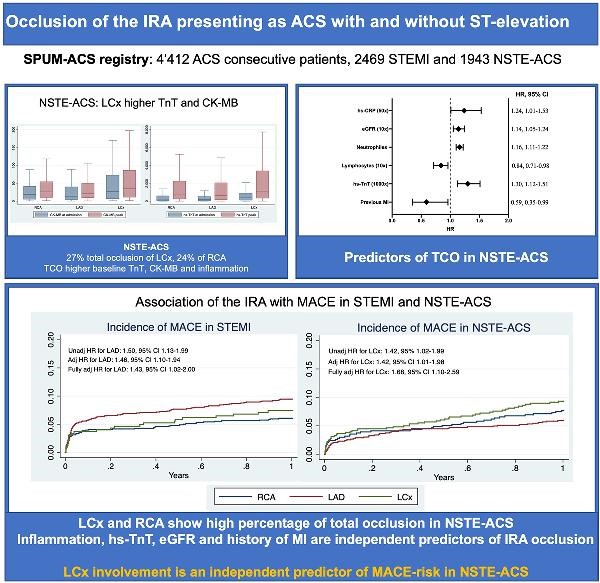Occlusion of the infarct-related coronary artery presenting as acute coronary syndrome with and without ST-elevation

Patients with ST-segment elevation typically feature total coronary occlusion (TCO) of the infarct-related artery (IRA) on angiography, which may result in worse outcomes. Yet, relying solely on ECG findings may be misleading and those presenting with non-ST-segment elevation acute coronary syndromes (NSTE-ACS) may have TCO as well. Herein, we aimed to delineate clinical characteristics and outcomes of patients with ACS stratified by IRA location. A total of 4'787 ACS patients were prospectively recruited between 2009 and 2017 in SPUM-ACS. The primary endpoint was major adverse cardiovascular events (MACE), a composite of all-cause death, non-fatal myocardial infarction and non-fatal stroke at one year. Multivariable-adjusted survival models were fit using backward selection. Notably, we found that both LCx and RCA involvement was associated with TCO at angiography despite the absence of ST-segment elevation. Involvement of the LCx, but not the LAD or RCA, as the IRA represented an independent predictor of MACE during 1-year follow-up. Hs-CRP, lymphocyte and neutrophil counts were independent predictors of total IRA occlusion suggesting a possible role of systemic inflammation in the detection of TCO irrespective of ECG presentation. Full study results are now available at the European Heart Journal - Quality of Care and Clinical Outcomes.
Simon Kraler